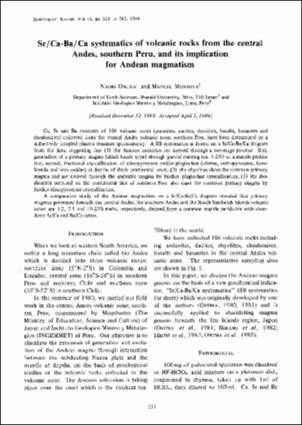Please use this identifier to cite or link to this item:
https://hdl.handle.net/20.500.12544/621Files in This Item:
| File | Description | Size | Format | |
|---|---|---|---|---|
| Onuma-Sr_Ca-Ba_Ca_systematics_of_volcanic_rocks.pdf | Artículo indizado | 6.09 MB | Adobe PDF | View/Open |
This item is licensed under a Creative Commons License












